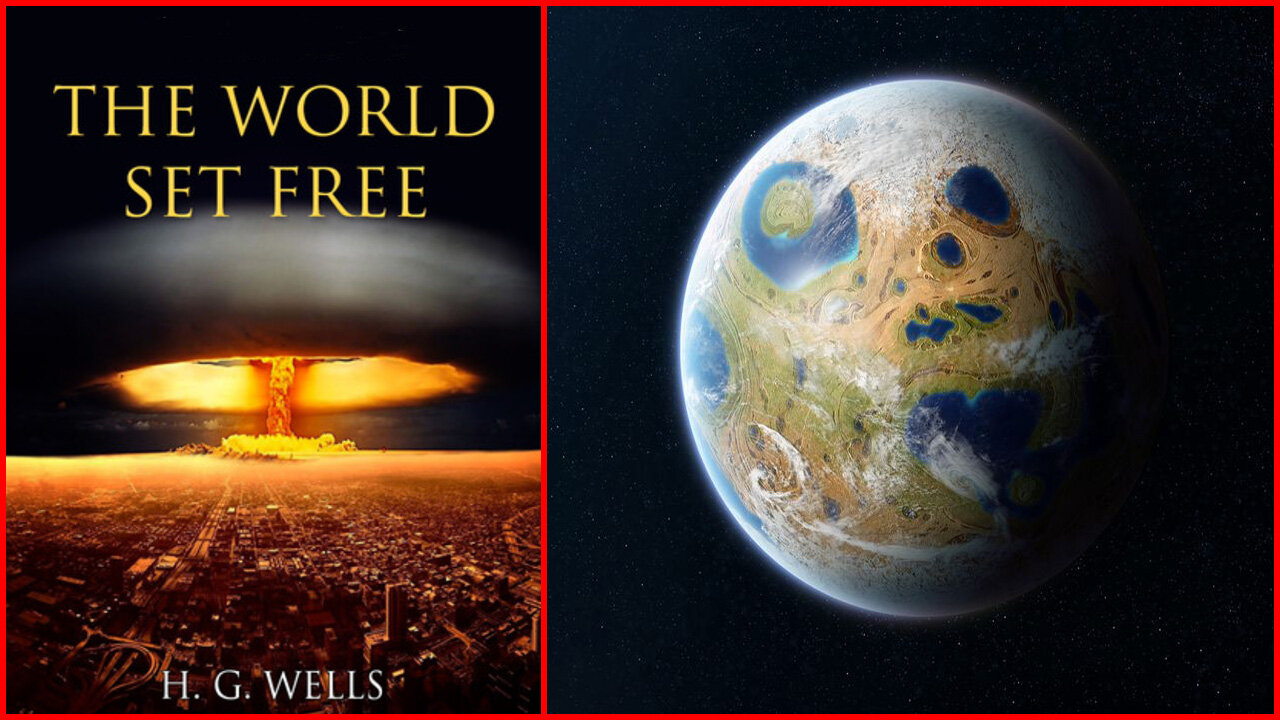Premium Only Content

'The World Set Free' (1913) by H G Wells
'The World Set Free' is a prophetic novel that imagines the development of atomic energy and its transformative effects on humanity. The story, written before nuclear physics was fully understood, envisions a future where atomic power is harnessed, leading to revolutionary changes in energy production and weaponry.
The novel opens with the discovery of "indefatigable" radioactive materials that release energy continuously. Wells depicts scientists who harness this new energy, initially with the goal of advancing society, but their efforts soon have destructive consequences as the technology is adapted for warfare. This leads to a devastating world conflict, as nations unleash powerful "atomic bombs" on one another, causing widespread devastation.
As civilization teeters on the edge, the survivors come together to seek a lasting peace. Wells explores the emergence of a world government, created to manage atomic power responsibly and prevent future wars. He envisions a new global society based on cooperation rather than conflict, where humanity redirects its focus toward progress, unity, and enlightenment.
Wells’s novel is notable for its foresight, particularly in its depiction of atomic bombs and the ethical dilemmas surrounding powerful technologies. Ultimately, The World Set Free reflects Wells’s belief in the potential of scientific progress to reshape human society—but also serves as a cautionary tale about the risks of unchecked technological advancement.
-
 2:48
2:48
Steven Crowder
18 hours agoCROWDER CLASSICS: What’s This? | Nightmare Before Kwanzaa (Nightmare Before Christmas Parody)
228K12 -
 33:49
33:49
Quite Frankly
15 hours agoThe Christmas Eve Midnight Telethon
26.4K4 -
 2:12:46
2:12:46
Price of Reason
14 hours agoAmber Heard BACKS Blake Lively Lawsuit Against Justin Baldoni! Is Disney CEO Bob Iger in TROUBLE?
12K7 -
 1:01:17
1:01:17
The StoneZONE with Roger Stone
9 hours agoChristmas Edition: Why the Panama Canal is Part of the America First Agenda | The StoneZONE
69K23 -
 LIVE
LIVE
LFA TV
20 hours agoLFA TV CHRISTMAS EVE REPLAY
1,743 watching -
 4:33:48
4:33:48
tacetmort3m
1 day ago🔴 LIVE - THE ZONE KEEPS PULLING ME BACK - STALKER 2 - PART 15
51K12 -
 22:45
22:45
Brewzle
16 hours agoI Went Drinking In A Real Bourbon Castle
35K3 -
 48:36
48:36
PMG
1 day ago $2.64 earned"Parkland Parent Speaks Out On Kamala Harris Using Victims"
27.6K3 -
 4:06
4:06
The Lou Holtz Show
15 hours agoCoach Lou Holtz’s Heartfelt Christmas Message 🎄 | Family, Faith & Notre Dame Spirit 💚 #christmas
20.6K -
![ROSEANNE BARR - Her Journey, TRUMP, and the MAGA GOLDEN AGE! [INTERVIEW]](https://1a-1791.com/video/s8/1/M/m/B/2/MmB2v.0kob.1-small-ROSEANNE-BARR-Her-Journey-T.jpg) 51:35
51:35
Dr Steve Turley
1 day ago $19.06 earnedROSEANNE BARR - Her Journey, TRUMP, and the MAGA GOLDEN AGE! [INTERVIEW]
55.5K54